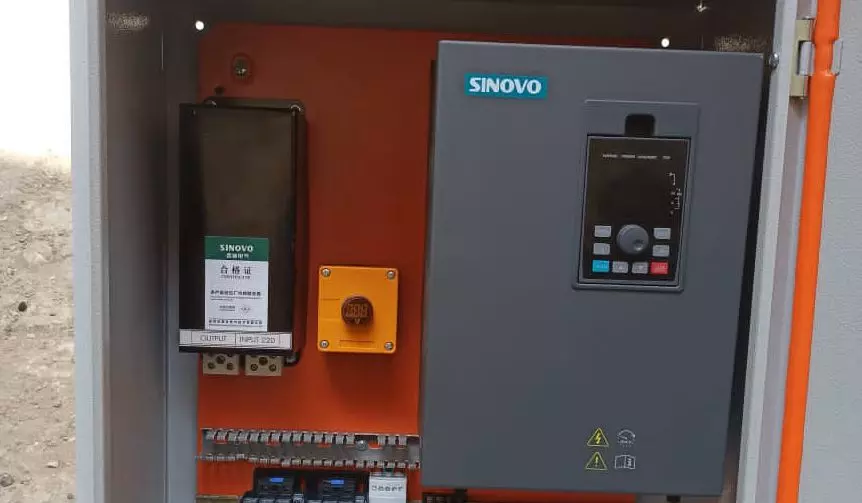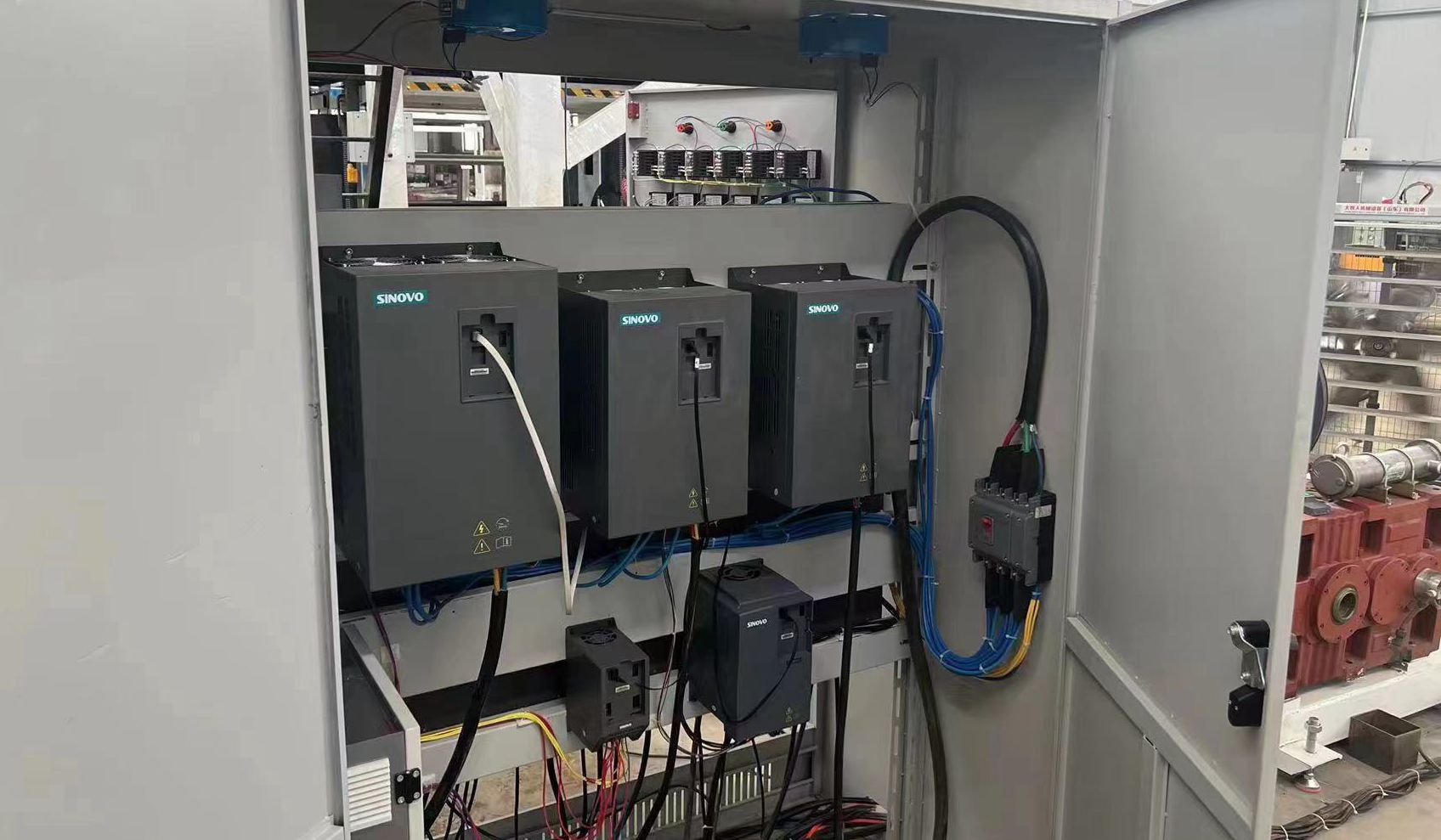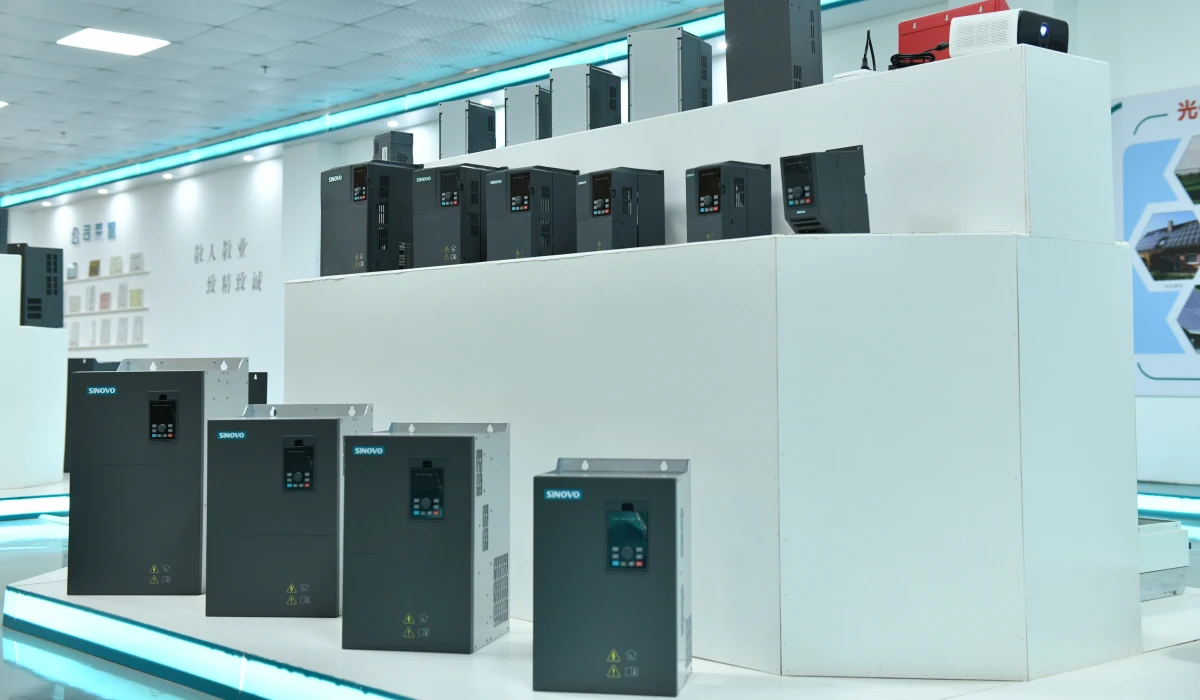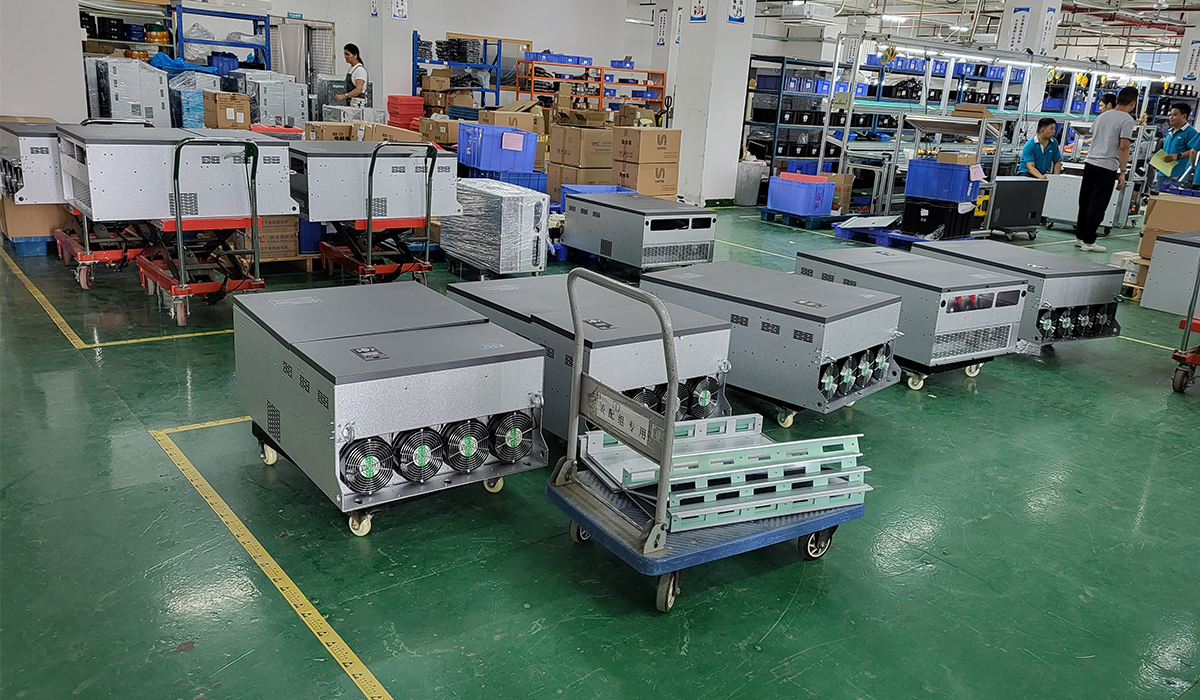Variable Frequency Drives (VFDs) are essential in modern industrial automation and motor control systems. They provide precise control over motor speed and torque, leading to improved efficiency and performance in various applications. The performance and reliability of a VFD depend heavily on its internal components.
1.Power Semiconductors
Power semiconductors are the heart of VFDs, responsible for converting and regulating electrical power. The most common types include:
Insulated Gate Bipolar Transistors (IGBTs): IGBTs combine the high-efficiency switching capabilities of MOSFETs with the high-current handling capacity of bipolar transistors. They are crucial for the VFD’s ability to handle high power levels while maintaining efficiency and reliability.
Diodes: These are used in the rectifier stage to convert AC to DC and in the inverter stage to manage current flow. Fast recovery diodes are especially important in reducing losses and improving efficiency.
MOSFETs: In lower power applications, MOSFETs are used for their high-speed switching capabilities and efficiency.
2.Capacitors
Capacitors in VFDs serve multiple functions, including energy storage, filtering, and voltage stabilization.
DC Link Capacitors: These store energy in the DC bus and smooth out the voltage ripple from the rectifier. They are critical for maintaining a stable DC link voltage, which is essential for efficient motor control.
Filter Capacitors: These reduce the high-frequency noise generated by the switching action of the IGBTs, protecting sensitive electronic components and ensuring compliance with electromagnetic interference (EMI) regulations.
3.Inductors and Transformers
Inductors and transformers play a vital role in VFDs by managing the flow of electrical energy and reducing harmonics.
Input and Output Inductors: These components filter out harmonics and reduce electrical noise. They also provide protection against voltage spikes, enhancing the reliability of the VFD and the connected motor.
Transformers: Used for isolation and voltage level adjustment, transformers in VFDs ensure safe operation and compatibility with different power systems.

4.Control Circuitry
Control circuitry is the brain of the VFD, managing the overall operation and ensuring precise control of motor speed and torque.
Microcontrollers and Digital Signal Processors (DSPs): These components execute the complex algorithms required for motor control, such as pulse-width modulation (PWM), vector control, and torque control.
Gate Drivers: These circuits control the switching of the IGBTs and MOSFETs, ensuring they operate efficiently and reliably. Gate drivers must handle high currents and voltages while providing precise timing signals.
5.Sensors
Sensors provide critical feedback to the control circuitry, enabling precise and responsive control of the motor.
Current Sensors: These measure the current flowing through the motor and provide feedback to ensure the motor operates within safe limits. Accurate current sensing is essential for implementing effective torque control and protection mechanisms.
Voltage Sensors: These monitor the voltage levels in the VFD, ensuring that the power supplied to the motor is stable and within the desired range.
Temperature Sensors: These protect the VFD from overheating by monitoring the temperature of critical components such as the IGBTs and capacitors. Overtemperature protection is vital for maintaining the longevity and reliability of the VFD.
6.Cooling Systems
Cooling systems are essential for managing the heat generated by the power semiconductors and other components within the VFD.
Heat Sinks: These passive cooling devices dissipate heat from the power semiconductors, ensuring they operate within safe temperature limits.
Fans and Airflow Management: Active cooling systems, such as fans, enhance the cooling capacity of heat sinks and maintain optimal operating temperatures.
7.Protective Devices
Protective devices safeguard the VFD and the connected motor from electrical faults and abnormal operating conditions.
Fuses and Circuit Breakers: These provide overcurrent protection, preventing damage to the VFD and motor in case of short circuits or overload conditions.
Surge Protectors: These devices protect the VFD from voltage spikes caused by lightning or other transient events.
The reliability and performance of a Variable Frequency Drive depend on the quality and functionality of its key components. Power semiconductors, capacitors, inductors, transformers, control circuitry, sensors, cooling systems, and protective devices all play critical roles in ensuring the VFD operates efficiently and safely. Understanding the importance of these components can help in selecting and maintaining VFDs, ensuring they meet the demanding requirements of modern industrial applications. By focusing on these critical elements, manufacturers and users can enhance the performance, reliability, and longevity of their VFD systems.
Variable Frequency Drives (VFDs) are essential in modern industrial automation and motor control systems. They provide precise control over motor speed and torque, leading to improved efficiency and performance in various applications. The performance and reliability of a VFD depend heavily on its internal components.
1.Power Semiconductors
Power semiconductors are the heart of VFDs, responsible for converting and regulating electrical power. The most common types include:
Insulated Gate Bipolar Transistors (IGBTs): IGBTs combine the high-efficiency switching capabilities of MOSFETs with the high-current handling capacity of bipolar transistors. They are crucial for the VFD’s ability to handle high power levels while maintaining efficiency and reliability.
Diodes: These are used in the rectifier stage to convert AC to DC and in the inverter stage to manage current flow. Fast recovery diodes are especially important in reducing losses and improving efficiency.
MOSFETs: In lower power applications, MOSFETs are used for their high-speed switching capabilities and efficiency.
2.Capacitors
Capacitors in VFDs serve multiple functions, including energy storage, filtering, and voltage stabilization.
DC Link Capacitors: These store energy in the DC bus and smooth out the voltage ripple from the rectifier. They are critical for maintaining a stable DC link voltage, which is essential for efficient motor control.
Filter Capacitors: These reduce the high-frequency noise generated by the switching action of the IGBTs, protecting sensitive electronic components and ensuring compliance with electromagnetic interference (EMI) regulations.
3.Inductors and Transformers
Inductors and transformers play a vital role in VFDs by managing the flow of electrical energy and reducing harmonics.
Input and Output Inductors: These components filter out harmonics and reduce electrical noise. They also provide protection against voltage spikes, enhancing the reliability of the VFD and the connected motor.
Transformers: Used for isolation and voltage level adjustment, transformers in VFDs ensure safe operation and compatibility with different power systems.

4.Control Circuitry
Control circuitry is the brain of the VFD, managing the overall operation and ensuring precise control of motor speed and torque.
Microcontrollers and Digital Signal Processors (DSPs): These components execute the complex algorithms required for motor control, such as pulse-width modulation (PWM), vector control, and torque control.
Gate Drivers: These circuits control the switching of the IGBTs and MOSFETs, ensuring they operate efficiently and reliably. Gate drivers must handle high currents and voltages while providing precise timing signals.
5.Sensors
Sensors provide critical feedback to the control circuitry, enabling precise and responsive control of the motor.
Current Sensors: These measure the current flowing through the motor and provide feedback to ensure the motor operates within safe limits. Accurate current sensing is essential for implementing effective torque control and protection mechanisms.
Voltage Sensors: These monitor the voltage levels in the VFD, ensuring that the power supplied to the motor is stable and within the desired range.
Temperature Sensors: These protect the VFD from overheating by monitoring the temperature of critical components such as the IGBTs and capacitors. Overtemperature protection is vital for maintaining the longevity and reliability of the VFD.
6.Cooling Systems
Cooling systems are essential for managing the heat generated by the power semiconductors and other components within the VFD.
Heat Sinks: These passive cooling devices dissipate heat from the power semiconductors, ensuring they operate within safe temperature limits.
Fans and Airflow Management: Active cooling systems, such as fans, enhance the cooling capacity of heat sinks and maintain optimal operating temperatures.
7.Protective Devices
Protective devices safeguard the VFD and the connected motor from electrical faults and abnormal operating conditions.
Fuses and Circuit Breakers: These provide overcurrent protection, preventing damage to the VFD and motor in case of short circuits or overload conditions.
Surge Protectors: These devices protect the VFD from voltage spikes caused by lightning or other transient events.
The reliability and performance of a Variable Frequency Drive depend on the quality and functionality of its key components. Power semiconductors, capacitors, inductors, transformers, control circuitry, sensors, cooling systems, and protective devices all play critical roles in ensuring the VFD operates efficiently and safely. Understanding the importance of these components can help in selecting and maintaining VFDs, ensuring they meet the demanding requirements of modern industrial applications. By focusing on these critical elements, manufacturers and users can enhance the performance, reliability, and longevity of their VFD systems.
continue reading
Related Posts
Variable Frequency Technology (VFT) is increasingly being recognized as a game-changer in the industrial automation sector, particularly in applications involving […]
Variable Frequency Drives (VFDs) are critical in converting single-phase power to three-phase power, enabling the use of three-phase motors in […]
Testing the insulation resistance of a Variable Frequency Drive (VFD) is a crucial maintenance task to ensure its reliability and […]



